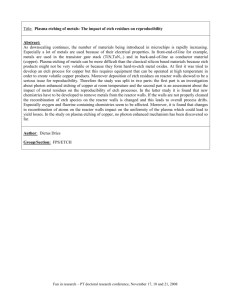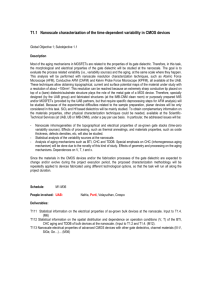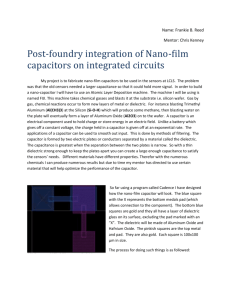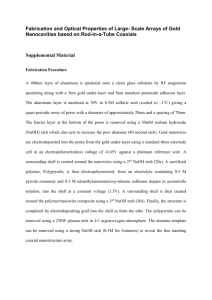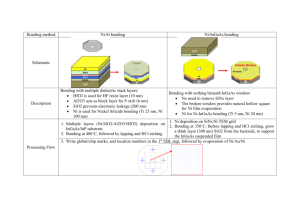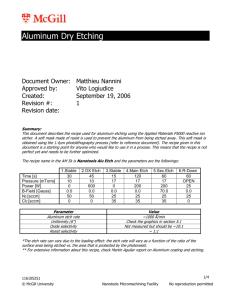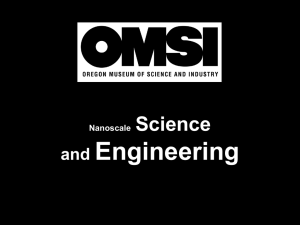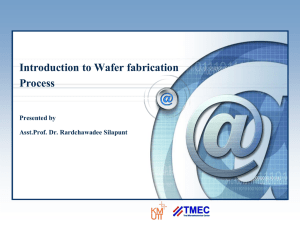Atomic layer etching of HfO2 film for gate oxide in MOSFET devices
advertisement
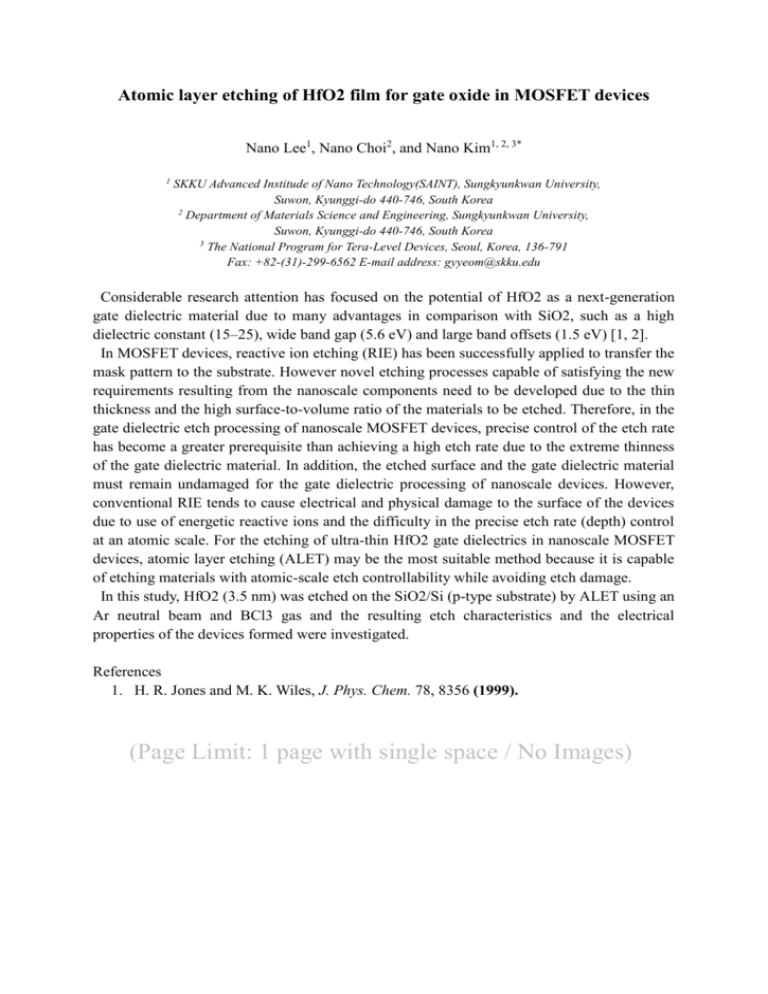
Atomic layer etching of HfO2 film for gate oxide in MOSFET devices Nano Lee1, Nano Choi2, and Nano Kim1, 2, 3* 1 SKKU Advanced Institude of Nano Technology(SAINT), Sungkyunkwan University, Suwon, Kyunggi-do 440-746, South Korea 2 Department of Materials Science and Engineering, Sungkyunkwan University, Suwon, Kyunggi-do 440-746, South Korea 3 The National Program for Tera-Level Devices, Seoul, Korea, 136-791 Fax: +82-(31)-299-6562 E-mail address: gyyeom@skku.edu Considerable research attention has focused on the potential of HfO2 as a next-generation gate dielectric material due to many advantages in comparison with SiO2, such as a high dielectric constant (15–25), wide band gap (5.6 eV) and large band offsets (1.5 eV) [1, 2]. In MOSFET devices, reactive ion etching (RIE) has been successfully applied to transfer the mask pattern to the substrate. However novel etching processes capable of satisfying the new requirements resulting from the nanoscale components need to be developed due to the thin thickness and the high surface-to-volume ratio of the materials to be etched. Therefore, in the gate dielectric etch processing of nanoscale MOSFET devices, precise control of the etch rate has become a greater prerequisite than achieving a high etch rate due to the extreme thinness of the gate dielectric material. In addition, the etched surface and the gate dielectric material must remain undamaged for the gate dielectric processing of nanoscale devices. However, conventional RIE tends to cause electrical and physical damage to the surface of the devices due to use of energetic reactive ions and the difficulty in the precise etch rate (depth) control at an atomic scale. For the etching of ultra-thin HfO2 gate dielectrics in nanoscale MOSFET devices, atomic layer etching (ALET) may be the most suitable method because it is capable of etching materials with atomic-scale etch controllability while avoiding etch damage. In this study, HfO2 (3.5 nm) was etched on the SiO2/Si (p-type substrate) by ALET using an Ar neutral beam and BCl3 gas and the resulting etch characteristics and the electrical properties of the devices formed were investigated. References 1. H. R. Jones and M. K. Wiles, J. Phys. Chem. 78, 8356 (1999). (Page Limit: 1 page with single space / No Images)

